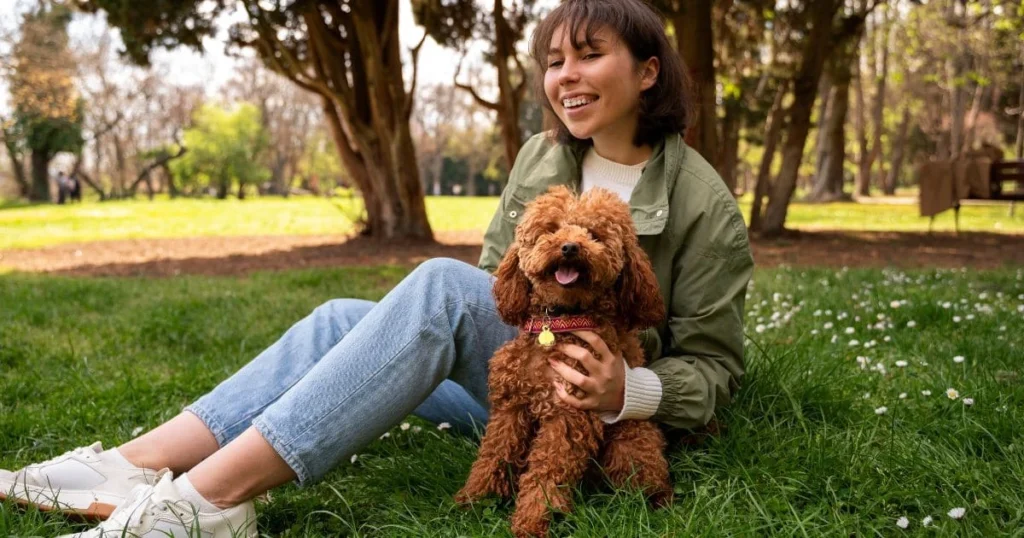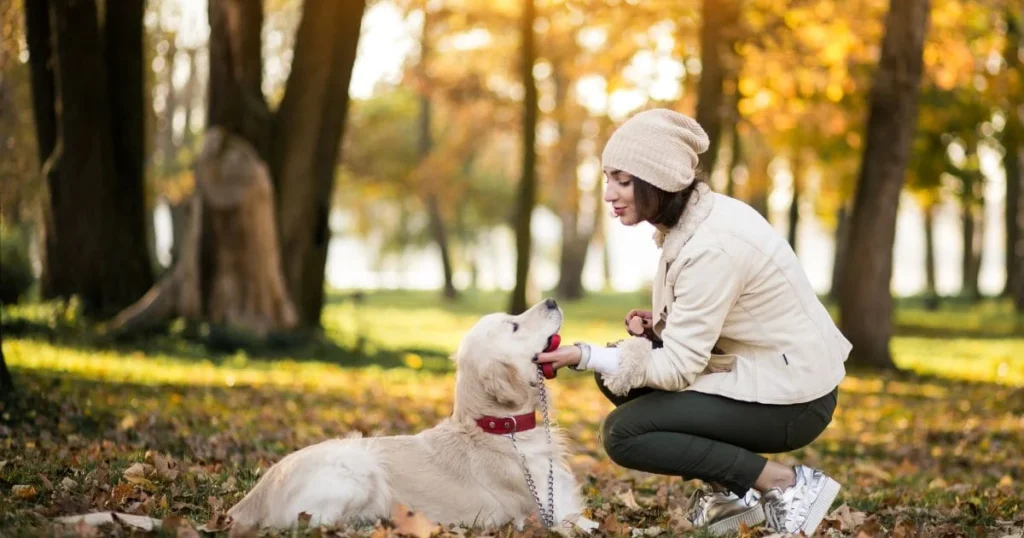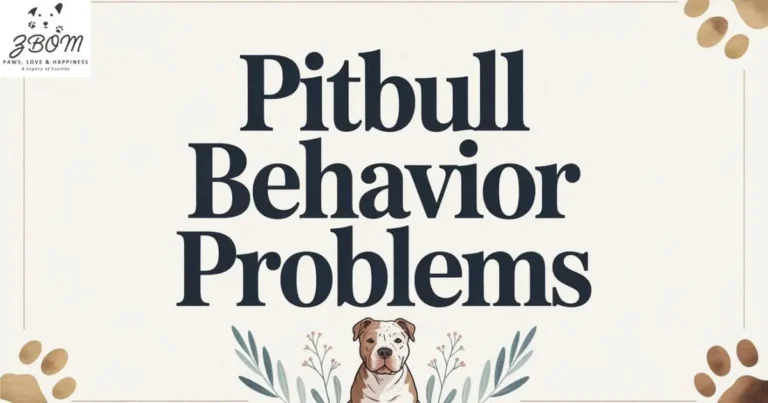
Health Problems in Labradoodles
Labradoodles have captured hearts worldwide with their teddy bear looks and friendly personalities, Health Problems in Labradoodles but behind those soulful eyes lies a complex genetic landscape that every buyer deserves to understand. While breeders and sellers often highlight the hypoallergenic coat and playful temperament, the reality is that Labradoodles can inherit health issues from both their Labrador Retriever and Poodle lineage—sometimes getting the worst of both worlds rather than the best.
This guide isn’t about discouraging anyone from welcoming a Labradoodle into their home. Instead, it’s about transparency.Health Problems in Labradoodles Whether you’re a breeder looking to educate potential buyers or someone considering adding a Labradoodle to your family, understanding the breed’s health vulnerabilities is essential.
From hip dysplasia and progressive retinal atrophy to the less discussed issues like Addison’s disease and sebaceous adenitis, these dogs face challenges that require informed, responsible ownership.
Knowing what to look for, which health screenings matter most, and how to communicate these risks honestly can make the difference between a family prepared for their dog’s needs and one blindsided by unexpected veterinary bills and heartache. Let’s explore the health realities of Labradoodles with the honesty they—and their future families—deserve.
Also Raed: How Old Does a Dog Have to be to breed
short answer about: Labradoodle Health Issues
Labradoodle health issues can vary from genetic conditions like hip and elbow dysplasia to common concerns such as allergies, PRA, and digestive problems. Maintaining their health starts with responsible breeding, regular veterinary check-ups, a balanced diet, and proper exercise. Being aware of these potential issues helps owners provide the best care, ensuring Labradoodles live long, happy, and healthy lives.
Labradoodle Health Issues
Labradoodles, a popular crossbreed between a Labrador Retriever and Standard Poodle, are beloved for their friendly nature and hypoallergenic coats. However, like all dog breeds, they are susceptible to certain health conditions that pet parents should be aware of. According to Jamie Whittenburg DVM, because Labradoodles inherit traits from both parent breeds, they can develop health issues common to both Labrador Retrievers and Standard Poodles.

The Importance of Responsible Breeding
Labradoodle breeders play a crucial role in preventing hereditary health problems. Responsible breeding stock selection involves thorough veterinary screening to ensure healthy puppies. Jamie Whittenburg DVM emphasizes that comprehensive testing should include genetic testing, eye exams, OFA or Penn HIP testing, and echocardiograms.
These preventive measures can significantly reduce the likelihood of passing down inherited disorders to Labradoodle puppy litters. While pet insurance can help pet parents manage medical treatment costs, prevention through proper screening remains the best approach.
Eye Conditions Affecting Labradoodles
Labradoodles are prone to several serious eye conditions that can impact their quality of life. Progressive retinal atrophy, commonly known as PRA, is an inherited disorder that causes retina deterioration over time. Rhea Morgan DVM from Veterinary Information Network explains through Veterinary Partner that this condition gradually leads to vision impairment and eventual blindness.
Also Read: How to Choose the Best Whelping Box French Bulldogs
One of the earliest signs of progressive retinal atrophy is night blindness, where affected dogs become clumsy in dim lighting or refuse to go outside after dark. While PRA is not a painful condition, it progressively worsens, though the timeline from onset to complete blindness can span months or years.
Unfortunately, there is no medical treatment available for this eye condition. However, blind dogs can adapt remarkably well and continue to live fulfilling lives with proper support from their pet parents.
Cataracts represent another common eye condition in Labradoodles. Wendy Brooks DVM, writing for Veterinary Partner, describes cataracts as clouding in eyes that develops when the lens becomes opaque.
Pet parents may notice cloudy lenses or opaque appearance in their dog’s eyes, How To Sell Health Problems in Labradoodles accompanied by progressive vision loss. Unlike progressive retinal atrophy, cataracts can be addressed through cataract surgery, which can restore vision in many cases.
Glaucoma is a particularly serious and painful condition characterized by increased eye pressure within the eyeball. This elevation in pressure causes eye inflammation, discoloration, and significant discomfort for the affected dog.
Any changes in your Labradoodle’s eyes or signs of vision loss warrant immediate consultation with a veterinarian for proper eye exams and treatment.
Hip Dysplasia in Large-Breed Dogs
Hip dysplasia is a prevalent orthopedic issue affecting Labradoodles, particularly common in large-breed dogs and giant-breed dogs. This condition develops during the growth phase of a Labradoodle puppy when abnormal hip development occurs, causing the hip joint to form improperly.
Pet parents should watch for several telltale symptoms indicating hip dysplasia. Lameness in one or both hind legs is often one of the first noticeable signs. Limping, especially after exercise or upon rising from rest, is another common indicator.
Also Read: How to Determine French Bulldog Litter Size
A characteristic bunny-hopping gait, where the dog moves both hind legs together rather than alternating, is particularly suggestive of hip problems. Additionally, affected Labradoodles often experience trouble standing up from a lying position, trouble jumping onto furniture or into vehicles, and difficulty navigating stairs.
Fortunately, multiple treatment options exist for managing hip dysplasia. Joint supplements containing glucosamine and chondroitin can help support joint health and reduce discomfort. Anti-inflammatory medications prescribed by a veterinarian can alleviate pain and reduce inflammation in the affected joints.
In severe cases, surgery may be recommended to correct the hip joint structure or replace the joint entirely. Consulting with a veterinarian is essential to determine the most appropriate treatment plan for your individual Labradoodle.
Heart Disease and Cardiac Complications
Heart disease represents a significant health concern for Labradoodles and many other dog breeds. This serious condition can stem from various underlying issues affecting cardiac function. Heart valve degeneration occurs when the valves that regulate blood flow within the heart deteriorate over time, leading to inefficient pumping.

An irregular heart rate or arrhythmia disrupts the normal rhythm of heartbeats, potentially compromising blood circulation throughout the body. Dilated cardiomyopathy, abbreviated as DCM, is a condition where the heart muscle becomes weakened and enlarged, reducing its ability to pump blood effectively.
Also Raed: How long are French bulldog pregnanat
Recognizing the warning signs of heart disease is critical for early intervention. A persistent cough that doesn’t resolve and seems unrelated to respiratory infections can indicate fluid buildup in the lungs due to heart failure. Fainting episodes or collapse during activity or excitement are alarming symptoms that require immediate veterinary attention.
Difficulty breathing, whether during exertion or at rest, suggests the heart is struggling to meet the body’s oxygen demands. Unusual fatigue or reduced stamina during normal activities may indicate declining cardiac function. Behavior changes such as loss of appetite, reluctance to engage in previously enjoyed activities, or general lethargy can also signal underlying heart problems.
If pet parents observe any of these concerning symptoms, scheduling an appointment with a veterinarian as soon as possible is crucial. Veterinary screening for heart conditions typically involves multiple diagnostic tools. Chest X-rays can reveal heart enlargement or fluid accumulation in the lungs.
Blood tests help assess overall health and identify markers of organ stress. An ultrasound of the heart and nearby blood vessels, known as an echocardiogram, provides detailed images of heart structure and function, making it an invaluable tool for heart screening.
While heart disease is undeniably serious if left untreated, modern veterinary medicine offers numerous treatment options.
Diet changes, such as sodium restriction and heart-healthy formulations, can reduce strain on the cardiovascular system. Medication including diuretics, ACE inhibitors, and other cardiac drugs can significantly improve heart function and quality of life for affected Labradoodles.
Also Read: How many puppies do French bulldog have
Protecting Your Labradoodle’s Health
Understanding the health conditions that commonly affect Labradoodles empowers pet parents to provide better care for their companions.
Whether dealing with eye conditions like progressive retinal atrophy, cataracts, or glaucoma, orthopedic issues like hip dysplasia, or cardiac concerns including dilated cardiomyopathy and arrhythmia, early detection through regular veterinary screening makes a tremendous difference in outcomes.
Prospective owners should seek out responsible Labradoodle breeders who conduct thorough genetic testing and health screenings on their breeding stock, including OFA or Penn HIP testing for hips and echocardiograms for heart health. Current owners should maintain regular eye exams and veterinary check-ups to catch potential issues early.
While conditions like night blindness, lameness, persistent cough, and fainting can be concerning, remember that blind dogs and those with managed chronic conditions can still enjoy excellent quality of life. Medical treatment advances, including cataract surgery, joint supplements, anti-inflammatory medications, surgery for hip dysplasia, and medications for heart valve degeneration, provide hope for affected dogs.
Pet insurance can help manage the financial burden of ongoing medical treatment, blood tests, chest X-rays, and ultrasound procedures. By staying informed about symptoms like clouding in eyes, bunny-hopping gait, trouble standing, trouble jumping, eye pressure, eye inflammation, irregular heart rate, difficulty breathing, fatigue, and loss of appetite, pet parents can act quickly when problems arise.

Working closely with a veterinarian like Jamie Whittenburg DVM, Rhea Morgan DVM, or Wendy Brooks DVM through resources such as Veterinary Information Network and Veterinary Partner ensures your Labradoodle receives the best possible care.
Whether you’re caring for a Labradoodle puppy or an adult dog, understanding these potential health challenges—from retina deterioration and vision loss to abnormal hip development and dilated cardiomyopathy—helps you provide the attentive, informed care your Labradoodle deserves throughout their life.
Also Read: How to Determine Frenchie Stud Fee Effectively
With proper veterinary screening, early intervention, appropriate diet changes, and dedicated care from pet parents, Labradoodles affected by these health conditions can continue to thrive and bring joy to their families despite facing challenges like blindness, vision impairment, lameness, limping, collapse, or reluctance to engage in activities they once loved.
Caring for a Labradoodle
Labradoodles are a distinctive breed known for their unique appearance and charming personalities. Understanding their grooming needs, size variations, and temperament characteristics helps potential owners determine if these Labradoodle dogs are the right fit for their lifestyle.
Coat Care and Grooming Requirements
One of the most recognizable features of Labradoodles is their long coats and curly coats that give them their signature teddy bear appearance. However, this beautiful fur comes with significant maintenance responsibilities. An extensive grooming routine is essential to keep their coats healthy and manageable. Without proper grooming, their fur can quickly become unruly fur, leading to the development of uncomfortable mats and knots that can cause skin irritation and discomfort.
Regular brushing, professional grooming appointments, and at-home maintenance are all crucial components of caring for a Labradoodle’s coat. The frequency and intensity of grooming depends largely on the individual dog’s coat type, as Labradoodles can inherit varying fur textures from their parent breeds.
The Hypoallergenic Myth
Labradoodles are frequently marketed as hypoallergenic dogs, making them appealing to individuals with allergies. However, it’s important to understand that no dog is truly allergen-free. While the breed is often referred to as hypoallergenic, this designation can be somewhat misleading.
That said, Labradoodles are known to not shed much compared to many other breeds, which does reduce the amount of dander and allergens released into the home environment. The amount of shedding and Labradoodle shedding varies significantly depending on the coat type inherited from their Labrador and Poodle parents. Some Labradoodles shed more than others, with those having more Poodle-like coats typically shedding less than those with coats resembling Labrador Retrievers.
Size Variations: Standard and Mini
Labradoodles come in two primary size categories, offering options for different living situations and preferences. The average Labradoodle is a substantial dog that weighs 50-75 pounds when fully mature. These standard-sized dogs stand approximately 25 inches tall when they reach their full-grown adult size.

For those seeking smaller dogs with the same lovable Labradoodle characteristics, Mini Labradoodles provide an excellent alternative. Mini Labradoodles are created by breeding Labs mixed with Miniature Poodles rather than Standard Poodles. A full-grown Mini Labradoodle is considerably more compact, standing 16-20 inches tall and weighing around 30 pounds. This makes them more suitable for apartment living or for families who prefer a more manageable-sized companion.
Also Read: When Can Male Dogs Get females Pregnant
Living Requirements and Exercise Needs
One of the appealing aspects of Labradoodle dogs is their adaptability to various living environments. These versatile dogs can thrive in homes of all sizes, from spacious houses with large yards to smaller apartments. The key to their happiness isn’t necessarily the size of the living space, but rather ensuring they’re given the right amount of daily exercise.
Labradoodles are active, energetic dogs that require regular physical activity to maintain their physical health and mental well-being. Daily exercise should include walks, playtime, and mental stimulation activities. Without adequate exercise, Labradoodles may develop behavioral issues or become restless and destructive.
Temperament and Personality
The temperament of Labradoodles is one of their most endearing qualities, making them beloved family pets worldwide. These dogs are extremely friendly, greeting both family members and strangers with enthusiasm and affection. Their loyal nature means they form strong bonds with their families and are devoted companions who want to be involved in all family activities.
Labradoodles are wonderful family dogs, known for their gentle disposition around children and their patient, tolerant nature. Their big personality shines through in everything they do, from their playful antics to their affectionate cuddles. They tend to be social butterflies who enjoy interacting with people and other pets.
Training and First-Time Owner Suitability
Another significant advantage of choosing Labradoodles is that they are easy to train. Their intelligence, inherited from both parent breeds, combined with their eagerness to please, makes them highly responsive to training methods. They quickly pick up commands, house training, and behavioral expectations when provided with consistent, positive reinforcement.
This trainability makes them ideal dogs and particularly well-suited as dogs for first-time pet parents. Novice dog owners who might feel overwhelmed by more challenging breeds often find Labradoodles to be forgiving, adaptable learners. Their friendly temperament and training responsiveness create a positive experience for owners learning the ropes of dog ownership.
As a companion, Labradoodles excel in providing emotional support, entertainment, and unconditional love. Whether you choose a standard Labradoodle that weighs 50-75 pounds and stands 25 inches tall at full-grown maturity, or opt for a more compact full-grown Mini Labradoodle at 16-20 inches tall and around 30 pounds, you’re welcoming a dog with remarkable versatility and charm.
Also Read: How much are fluffy French bulldog
What To Feed a Labradoodle
Proper nutrition is fundamental to ensuring Labradoodles enjoy a long life and happy life filled with vitality and wellness. Understanding the dietary needs of these beloved dogs helps pet parents make informed decisions about their companion’s health and longevity.
Essential Dietary Requirements
For Labradoodles to thrive, they must have access to high-quality dog food that meets their nutritional needs along with constant availability of fresh water. A balanced diet is crucial for helping your dog maintain a healthy weight, which directly impacts their overall health, mobility, and lifespan. Obesity can lead to numerous health complications, while proper nutrition supports immune function, coat health, and energy levels.
Choosing a Dog Food: What to Look For
When choosing a dog food for your Labradoodle, pet parents face an overwhelming array of options in the marketplace. The key is to select foods that meet the nutritional standards established by the Association of American Feed Control Officials, commonly known as AAFCO. This organization sets guidelines that ensure pet foods contain appropriate levels of proteins, fats, vitamins, and minerals necessary for canine health.
Reputable brands that meet AAFCO standards and are frequently recommended include Purina Pro Plan, Hill’s Science Diet, and Royal Canin. These manufacturers have invested in research and quality control to produce complete and balanced commercial food diet options suitable for dogs at various life stages.
How to Feed a Labradoodle: Meal Frequency and Portion Control
Understanding how to feed a Labradoodle properly involves more than just selecting quality food. Adult Labradoodles should eat two meals per day rather than one large meal. This feeding schedule helps maintain steady energy levels throughout the day and supports better digestion.
Labradoodle puppies, particularly those under 6 months old, have different requirements and may need to eat more frequently than adult dogs. Puppies typically require three to four meals daily to support their rapid growth and high energy needs. As they mature, you can gradually transition them to the standard two-meal schedule.
Managing Food-Motivated Behaviors
Labrador Retrievers have earned a well-deserved reputation for being food-motivated, and many Labradoodles inherit this enthusiastic approach to mealtime. If your Labradoodle takes after this trait and chows down on their meals too quickly, this rapid eating can lead to digestive issues and discomfort.
How Much Is a Frenchie, To address dogs that consume meals too quickly, consider using a slow feeder bowl designed with ridges and obstacles that force dogs to slow them down during eating. Another excellent option is an interactive food-dispensing toy, which not only slows the eating pace but also provides much-needed mental stimulation. These tools help prevent stomach upset, bloating, and the potentially dangerous condition known as gastric dilatation-volvulus (GDV or bloat).
Nutritional Tips for Optimal Health
When it comes to nutritional tips for maintaining your Labradoodle’s health, the foundation is selecting appropriate food for their life stage. Dogs have different nutritional requirements depending on whether they’re a puppy in their growth phase, an adult in their prime, or a senior dog with changing metabolic needs.
Puppy formulations contain higher levels of protein and calories to support rapid development. Adult formulas maintain health and energy for mature dogs. Senior diets often include joint-supporting ingredients and adjusted calorie levels for less active older dogs.
Understanding Nutritional Supplements
A common question among pet parents concerns nutritional supplements. Unless recommended by a veterinarian, dogs fed a complete and balanced commercial food diet should not need any additional nutritional supplements. Quality dog foods formulated to meet AAFCO standards already contain all the essential nutrients your Labradoodle requires.

However, your vet may recommend certain supplements depending on your dog’s unique health needs. For example, dogs with joint issues might benefit from glucosamine supplements, while those with specific deficiencies might require targeted supplementation. It’s crucial to never feed a dog a supplement without speaking to your veterinarian first, as over-supplementation can be harmful and create nutritional imbalances.
Life Stage Considerations
Feeding requirements change dramatically across a Labradoodle’s lifespan. Puppy nutrition focuses on growth and development, requiring higher calorie density and specific ratios of calcium and phosphorus for proper bone development. Adult dogs need maintenance nutrition that supports their activity level and maintains their healthy weight. Senior Labradoodles often benefit from formulations with reduced calories, enhanced joint support, and easily digestible ingredients.
Always consult with your vet when transitioning between life stages to ensure you’re meeting your dog’s evolving nutritional needs. Your veterinarian can assess your individual dog and provide personalized recommendations based on factors like activity level, health status, and body condition.
Also Read: How To Determine Black French Bulldog Cost
Water: The Overlooked Nutrient
While much attention focuses on food selection, access to fresh water is equally vital for Labradoodles to maintain a long life and happy life. Water supports every bodily function, from digestion to temperature regulation. Ensure your dog always has clean, fresh water available, and wash water bowls daily to prevent bacterial growth.
Monitoring and Adjusting
Regardless of whether you choose Purina Pro Plan, Hill’s Science Diet, Royal Canin, or another high-quality dog food that meets AAFCO nutritional standards, monitoring your Labradoodle’s response to their diet is essential. Watch for signs of food allergies, digestive upset, or weight changes. A balanced diet should result in a healthy weight, shiny coat, good energy levels, and normal bowel movements.
If your food-motivated Labradoodle continues to chows down too rapidly despite using a slow feeder bowl or interactive food-dispensing toy, consult your vet about additional strategies to slow them down and prevent stomach upset while ensuring they receive adequate mental stimulation during meals.
Working with Your Veterinarian
Your vet is your most valuable resource when it comes to nutritional tips and feeding strategies. They can evaluate your dog’s unique health needs and determine if any certain supplements are appropriate. Regular check-ups allow your veterinarian to assess whether your current feeding plan is working or if adjustments are needed.
When choosing a dog food, speaking to your veterinarian can provide insights based on your Labradoodle’s specific circumstances. They may have recommendations beyond standard options like Purina Pro Plan, Hill’s Science Diet, or Royal Canin based on your dog’s individual requirements.
Behavior and Training Tips for Labradoodles
Understanding Labradoodle Personality, Temperament, and Training
The Labradoodle personality is characterized by a unique blend of traits that make these dogs both delightful and demanding companions. Understanding their temperament, behavioral needs, and training requirements is essential for anyone considering adding one of these charming dogs to their family.
Core Personality Traits
Labradoodles are notably high-energy dogs with an attention-seeking nature that ensures they remain at the center of family activities. The intelligent Labradoodle possesses cognitive abilities inherited from both parent breeds, making them quick learners and problem-solvers. These dogs require frequent exercise, consistent interaction, and regular play to maintain their physical and mental well-being.
According to Whittenburg, Labradoodles thrive best in environments with active pet parents who have sufficient time to devote to meeting their considerable needs. Without adequate stimulation and activity, these energetic dogs can become bored and potentially develop behavioral issues.

The jolly Labradoodle exhibits amicable characteristics that endear them to everyone they meet. Their playful qualities make them a prime companion for virtually any household configuration, including homes with young children, feline friends, and other dogs. Their sociable nature and adaptable temperament allow them to integrate seamlessly into diverse family structures.
Socialization Requirements
While Labradoodles generally possess friendly dispositions, proper socialization is a must for developing a well-behaved companion. Early and ongoing socialization helps ensure your dog learns appropriate behaviors and responses to various situations, people, and animals.
Christos Philippou, a respected dog trainer at Del K9 Academy, emphasizes that Labradoodles tend to do great with other animals and younger children if introduced slowly and properly. The key phrase here is “slowly and properly”—rushed introductions can lead to issues that may require significant effort to resolve. Philippou advises families to work with a trainer if they have any questions or concerns to ensure introductions and socialization proceed as smoothly as possible.
Also Read: How to Determine Frenchie Dog Prices Effectively
Labradoodle Behavior Patterns
Understanding Labradoodle behavior helps pet parents anticipate and meet their dog’s emotional needs. These dogs adore company and genuinely relish time spent with their humans, viewing their families as their entire world. However, they hate being left alone for long periods of time, which can trigger stress and anxiety.
To address potential issues, crate training your puppy from an early age establishes a safe space and helps with house training. Providing interactive toys when you’re gone can keep your dog mentally engaged and may prevent a Labradoodle from developing separation anxiety, a common challenge for this attachment-oriented breed.
Regarding vocalization, Labradoodles are not typically excessive barkers compared to some other breeds. However, the right amount of training and consistent exercise is required to ensure they learn to behave appropriately in various situations. Without proper guidance, even these generally well-mannered dogs can develop unwanted barking habits.
Philippou notes that while they are incredible family dogs, they certainly need a dedicated pet parent willing to invest effort in addressing their substantial physical needs and mental needs. This commitment is non-negotiable for those seeking a harmonious relationship with their Labradoodle.
These dogs are exceptionally loving and affectionate, forming deep bonds with their families. However, prospective owners must be prepared to provide them at least an hour of exercise daily—and often more for particularly energetic individuals. This exercise requirement isn’t optional; it’s fundamental to their wellbeing.
Labradoodle Training Approaches
Labradoodle training benefits tremendously from the breed’s genetic advantages. As a hybrid of two of the smartest dog breeds—Labrador Retrievers and Poodles—Labradoodles inherit exceptional intelligence from both lineages. According to Philippou, they are eager to please and highly trainable, making them responsive to consistent training efforts.
These versatile dogs can be taught to excel at an impressive range of activities. From basic tricks like sit, stay, and roll over to more complex activities such as running agility courses, Labradoodles demonstrate remarkable learning capacity. Their intelligence and athletic ability make them suitable for various canine sports and activities.
Training methodology matters significantly. Always use positive reinforcement techniques during training sessions, as these methods align with the Labradoodle’s sensitive and people-oriented nature. Using treats to reward good behaviors creates positive associations and accelerates learning. Harsh corrections or punishment-based methods are counterproductive and can damage the trust bond essential to successful training.
It’s critically important to train Labradoodle puppies at a very young age. Early training during the crucial developmental period helps establish good habits that will last throughout their lifetime. Consistent early training also helps minimize mischievous behavior that can become entrenched if not addressed promptly.
The combination of their gentle nature and sharp-witted nature makes Labradoodles particularly suitable for specialized roles. With appropriate training, these dogs can even be trained to become service dogs, providing assistance to individuals with disabilities. Their intelligence, trainability, and intuitive understanding of human emotions make them excellent candidates for this important work.
Fun Activities for Labradoodles
Given their energy levels and need for stimulation, incorporating diverse fun activities for Labradoodles into their routine is essential. These activities provide both physical exercise and mental engagement while strengthening the human-canine bond.
Land-based activities include walking and running, which serve as foundational daily exercises. Hiking offers adventure and environmental enrichment through new sights, sounds, and smells. Playing fetch combines cardiovascular exercise with training reinforcement, as it builds on basic commands. Dog parks provide valuable socialization opportunities where your Labradoodle can interact with other dogs under supervision. Tug-of-war offers interactive play that satisfies natural instincts while building engagement.
Water activities are particularly appealing to many Labradoodles, given their Labrador heritage. Swimming provides low-impact, full-body exercise that’s especially beneficial for dogs with joint concerns. Dock diving takes swimming to the competitive level, allowing athletic Labradoodles to showcase their jumping and swimming abilities in organized events.
For those interested in traditional canine pursuits, hunting activities can engage the Labradoodle’s retrieving instincts inherited from their Labrador parentage. Obedience training provides mental stimulation while reinforcing good manners and responsiveness. Agility training challenges both body and mind as dogs navigate obstacle courses, building confidence and physical coordination.
Meeting Physical and Mental Needs
The emphasis on meeting both physical needs and mental needs cannot be overstated. A tired Labradoodle is generally a well-behaved Labradoodle. The hour of exercise daily represents a minimum requirement, not a maximum. High-energy individuals may need considerably more activity to remain content and manageable.
Mental stimulation is equally important as physical exercise. Puzzle toys, training sessions, new environments, and social interaction all contribute to keeping an intelligent Labradoodle engaged and satisfied. Neglecting mental stimulation can result in destructive behaviors as your dog seeks outlets for their considerable cognitive energy.
Creating a Well-Behaved Companion
Transforming a Labradoodle puppy into a well-behaved companion requires commitment and consistency. The combination of proper socialization is a must, regular training using positive reinforcement techniques, adequate exercise, and genuine companionship creates the foundation for success.
Working with a trainer, particularly someone experienced like Christos Philippou from Del K9 Academy, can provide invaluable guidance. Professional trainers help prevent issues before they develop and address challenges efficiently when they arise. Their expertise in techniques like crate training your puppy and strategies for preventing separation anxiety proves especially valuable for first-time Labradoodle owners.
Remember that rushed introductions when bringing your Labradoodle into contact with young children, feline friends, other dogs, or younger children can lead to issues that require extensive remediation. Taking time to introduce slowly and properly sets everyone up for success and helps your dog do great with other animals and family members.
Long-Term Commitment
Owning a Labradoodle requires dedication from a dedicated pet parent willing to invest in their physical needs, mental needs, and emotional wellbeing. These incredible family dogs reward that investment with unwavering loyalty, affection, and companionship.
From the jolly Labradoodle’s amicable and playful qualities that make them a prime companion for any household, to their loving and affectionate nature that makes them adore company and relish time with their humans, these dogs offer unmatched devotion. However, they hate being left alone for long periods of time and aren’t suited for families unable to provide frequent exercise, interaction, and play.
Whether you’re interested in basic tricks like sit, stay, and roll over, or ambitious goals like running agility courses or training service dogs, the highly trainable and eager to please nature of this hybrid of smartest dog breeds makes almost anything possible. Their intelligent Labradoodle heritage, gentle nature, and sharp-witted nature allow them to be taught to excel at diverse activities from walking, running, and hiking to swimming, dock diving, and hunting, as well as structured pursuits like obedience and agility training.
The key to success lies in being prepared to meet their considerable needs, using positive reinforcement techniques and treats to reward good behaviors, training Labradoodle puppies at a young age to establish good habits for their lifetime, providing interactive toys and practicing crate training your puppy to prevent separation anxiety.
Ensuring the right amount of training so they behave appropriately and don’t become excessive barkers, and working with a trainer when needed to ensure introductions and socialization proceed smoothly without rushed introductions that lead to issues.
With proper care from active pet parents who have time to devote to these high-energy, attention-seeking dogs, including at least an hour of exercise daily and engagement in fun activities for Labradoodles like fetch, tug-of-war, dog parks, and various training activities, you’ll enjoy the companionship of a well-behaved companion who brings joy to your household, whether you have young children, feline friends, other dogs, or younger children.
The temperament and Labradoodle personality make them truly incredible family dogs for those prepared to minimize mischievous behavior through consistent attention to their physical and mental needs as emphasized by both Whittenburg and Philippou from Del K9 Academy.
Conculsion
Being transparent about health issues when selling a Labradoodle isn’t just the right thing to do—it’s essential for building trust and protecting yourself legally. By providing complete medical records, being honest about any existing conditions, and offering health guarantees, you demonstrate integrity as a breeder or seller. Remember that responsible buyers appreciate candor over surprises down the road. \
When you disclose health problems upfront and price accordingly, you’re more likely to find understanding owners who are prepared for the commitment. This honest approach not only protects the dog’s wellbeing but also establishes your reputation as someone who truly cares about these wonderful companions finding their forever homes.
FAQ
What are the health problems with Labradoodles?
Labradoodle health depends on good breeding to prevent hip dysplasia, elbow dysplasia, allergies, PRA, and dog digestive issues.
What is the leading cause of death in Labradoodles?
Cancer is the leading cause of death in Labradoodles, especially older dogs, causing 33-40% of deaths along with Addison’s disease, kidney failure, liver disease.
What is the lifespan of a labradoodle?
The average lifespan of a Labradoodle is 12–15 years; smaller Labradoodles and miniatures live longer than standard sizes, facing hip dysplasia, PRA, ear issues.
What is the healthiest food for Labradoodles?
Labradoodles need omega-3, omega-6 fatty acids for a soft coat, shiny coat, irritation free skin; dog food with fish oil, flaxseed, high-quality proteins, Spot & Tango Fresh, UnKibble supports coat health, skin health.
Can I put coconut oil on my Labradoodle?
Veterinarians often do not recommend coconut oil for a dog’s skin, as the risk may outweigh benefits like hydrate skin, reduce inflammation, antibacterial, antifungal properties, anecdotal in dogs.




